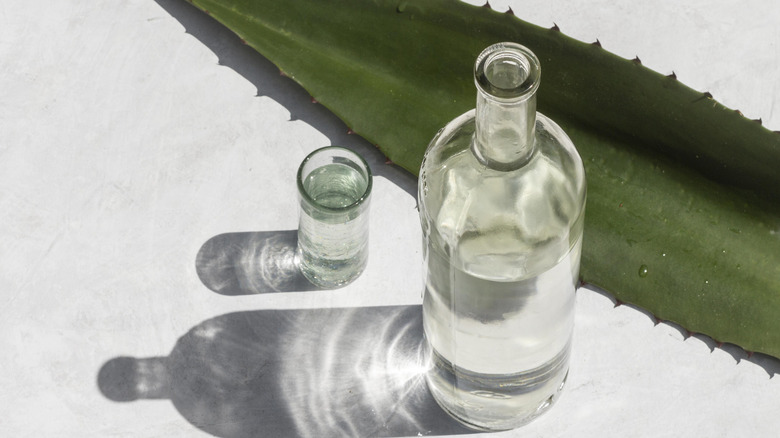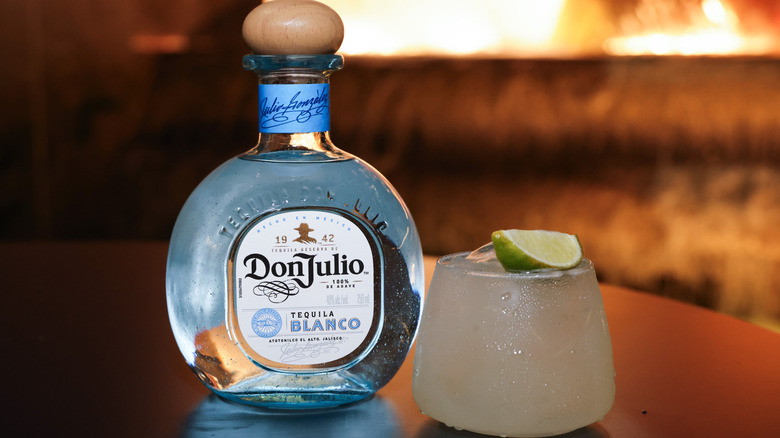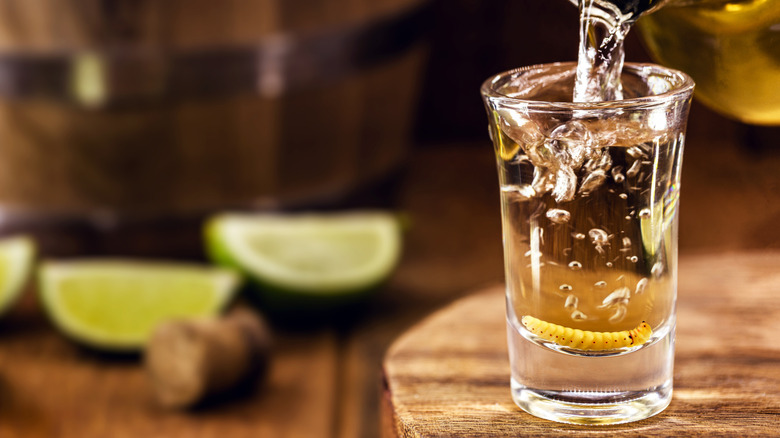The Important Differences Between Mezcal And Tequila
Tequila and mezcal are inarguably Mexico's contribution to the world of spirits. Many people assume that mezcal is just another type of agave-based alcohol, but it is actually an overarching category that includes tequila, as well as the more obscure raicilla and bacanora. While both tequila and mezcal are derived from agave, they differ in the species of agave used, the harvesting and cooking methods, and the specific regions where they can be produced.
To be called tequila, the product must be made exclusively from Blue Weber agave, which must be grown in Jalisco — the heart of tequila production — or in designated areas of Guanajuato, Michoacán, Nayarit, and Tamaulipas. Mezcal, on the other hand, is a broader category, but the right to use the word mezcal on a bottle is earned by meeting specific requirements. Around 40 species of agave can be used, but production is restricted to Oaxaca, where most mezcal originates, and nine other Mexican states.
The cooking methods also differ. Tequila's agave is traditionally cooked in masonry ovens, though larger brands often use stainless steel autoclaves. These methods allow the agave's sugars to concentrate without introducing additional flavors, such as the smokiness found in mezcal. Mezcal's signature smoky aroma and flavor come from roasting the agave core, or piña, in underground pits lined with rocks or bricks and covered during the process.
What is tequila?
Today's tequilas are a far cry from the frat party hell water of yore. Strict regulations govern tequila production. A high-quality bottle will always be labeled 100% Blue Weber agave. In stark contrast, low-quality, industrial tequila — known as mixto — only requires 51% Blue Weber agave, with the remaining 49% coming from other sugars, along with added flavoring and coloring.
Despite tequila's relatively uniform flavor profile, variations exist between the two growing regions of Jalisco, each with its own distinct personality. Lowland tequilas, shaped by volcanic soil, tend to have a vegetal, and sometimes herbal and peppery, profile. Highland tequilas, which face harsher growing conditions, have a fruitier sweetness.
Barrel aging — or the lack thereof — further influences these flavors. As tequila ages, it develops deeper notes of vanilla, oak, caramel, and spice. Blanco, or silver tequila, cannot be aged for more than two months, giving it a clean, bright, citrusy quality. Reposado is aged for two to 12 months. Añejo matures for one to three years, while extra añejo, the most concentrated in flavor, rests in barrels for three or more years. The lesser-known joven style blends blanco with either reposado or añejo, bridging the crisp brightness of the former with the richer vanilla and oak notes of the latter.
What is mezcal?
Just as tequila had to emerge from the shadow of mixto, mezcal has fought its own negative reputation as the spirit with the worm at the bottom of the bottle. Beyond its trademark smokiness, mezcal exhibits nearly limitless variations depending on the production methods and the microclimates where the agave is grown.
Unlike tequila, mezcal falls into three distinct categories based on how the agave is cooked, milled, fermented, and distilled. Modern, industrial mezcals do not adhere to traditional production techniques. Artesanal mezcal, however, retains many old-world methods, such as pit ovens, though it may incorporate some modern processes, like mechanical mills for crushing the agave. Ancestral mezcal, often considered the purest expression of the spirit, eschews all machinery, with every step of the process performed by hand. In some cases, the agave is crushed using a tahona — a heavy stone wheel pulled in a circle by a donkey. A few niche tequila brands also employ this method, as it produces a smooth, sweet agave profile.
As both bartenders and consumers continue seeking more and more unique spirits, tequila and mezcal have risen to the challenge. No longer are people limited to frat-party tequila or worm-at-the-bottom mezcal. With many smaller producers embracing artisanal methods and larger brands committing to rigorous production standards, the nuances of agave spirits continue to evolve.



